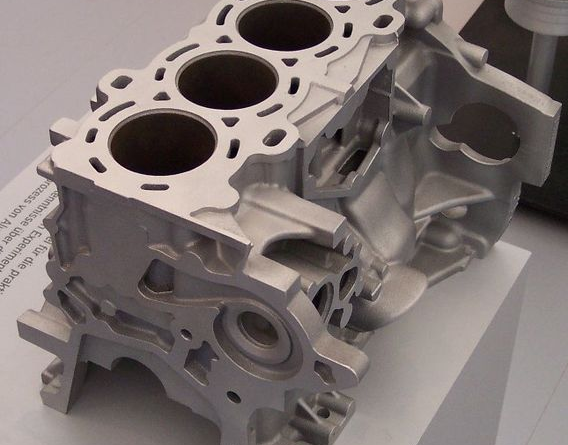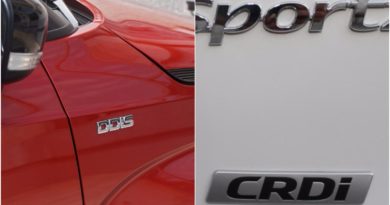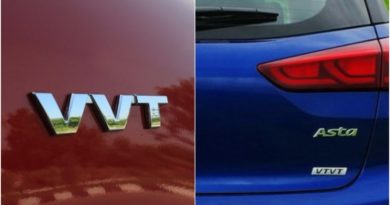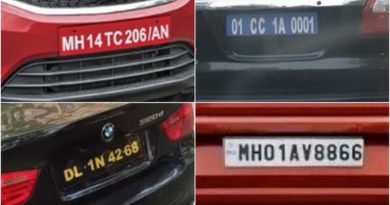How car engine works?
Car engine deploys concept of burning fuel along with air inside a cylindrical chamber to generate power and hence, called as Internal Combustion (IC) engines. It’s divided in two major parts – Engine block & Engine head.
Engine Block: It is casted out from Iron or aluminium block and required number of cylindrical holes are drilled based on the planned engine capacity. Also, coolant passage is drilled all around the cylinder to take out the combustion heat during engine run-time. At lower side of engine block, space is created known as crankcase to accommodate crank shaft. This crank shaft is responsible to convert reciprocating (vertical) motion into rotational motion.
 |
| Engine Block (Image Source: Wikipedia) |
Engine Head: This part too is casted from same material as engine block and it sits on top of engine block hence, called as Engine Head. In general, It holds space for Inlet & exhaust valve, spark plug/fuel injector and camshaft.
- Inlet/Exhaust Valve – Every cylinder will have at least two valve, one as Inlet valve & another as exhaust valve. Inlet valve allows the air or air/fuel mixture to enter the combustion chamber and exhaust valve allows the post combustion generated gases to go out of combustion chamber and released to atmosphere through exhaust pipe.
- Spark Plug/Fuel Injector – Depending upon the engine fuel type, either spark plus or fuel injector will be placed for each cylinder in engine head. Just before the end of compression stroke, electronically controlled spark plug or fuel injector will get triggered. In petrol engine, spark plug will be responsible for igniting the air/fuel mixture to achieve controlled combustion. In diesel engine, fuel Injector helps in achieving controlled combustion by injecting fine mist of diesel into combustion chamber containing compressed air.
- Camshaft – It’s a cylindrical shaft with number of cam lobes (Protrusion) on its surface which helps in opening or closing of Inlet/exhaust valve.
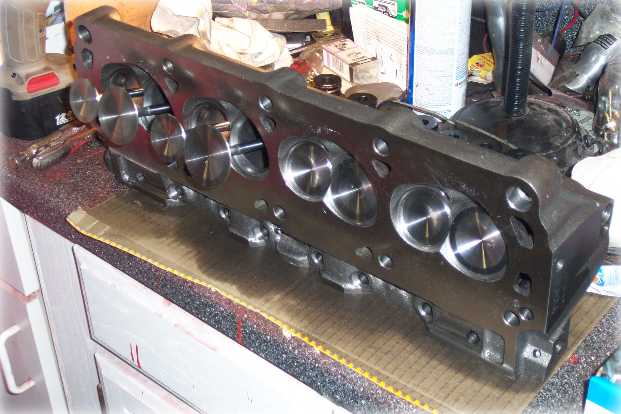 |
| Engine Head (Image Source: Wikipedia) |
Along with these two major part, we have one more important moving part which plays significant role in making this engine run in real time – Piston. This is fixed over crank shaft and placed inside the engine block cylinder opening. Up and down movement of this piston make combustion possible by compressing air or air/fuel mixture to attain temperature needed for controlled combustion.
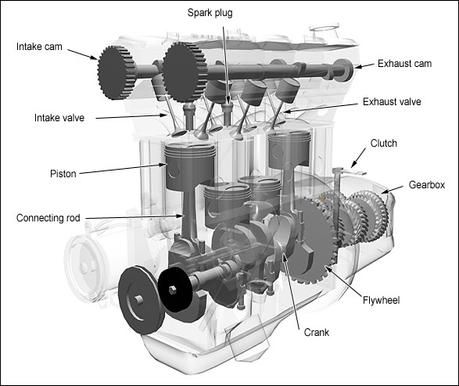 |
| Representation of Gasoline Engine (Image Source: Pinterest) |
Working principle of car’s engine:
IC Engine used in cars work on 4-stroke principle to generate power. It’s called as 4-stroke because piston inside the cylinder traverse from top end of the cylinder to bottom end for 4 times resulting in completion of one cycle for generation of power. These strokes are named as:
- Intake stroke – In this stroke, piston starts from top end of the cylinder i.e, top dead center (TDC) and moves down till bottom end i.e, bottom dead center (BDC). During it’s downward traverse, it create suction which pulls in air or air/fuel mixture inside cylinder from Inlet valve which is timed to open-up accordingly via. rotating camshaft.
- Compression stroke – At the end of Intake stroke, compression stroke starts at BDC and piston moves towards TDC to compress the air or air/fuel mixture in order to attain required temperature for combustion to occur. During this stroke, both the Inlet/exhaust valve are at closed position.
- Power stroke – As soon as piston reaches TDC during end of compression stroke, heated air/fuel mixture is ignited by spark plug in petrol engine or fine mist of diesel is sprayed inside by fuel injector to mix with heated air which results in controlled combustion to occur. This combustion forcefully pushes the piston downward to BDC and generates mechanical work which turns the crankshaft attached to piston. Out of 4-strokes, this stroke accounts for the power coming out of the engine which drives the car.
- Exhaust stroke – During this stroke, piston moves from BDC (at the end of power stroke) towards TDC to push the left over residue of combustion out of cylinder via. open exhaust valve.
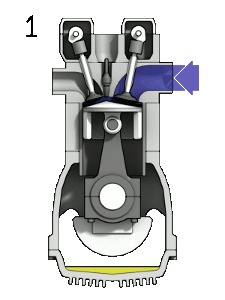 |
| 4-Stroke of IC Engine (Image Source: Wikipedia) |

